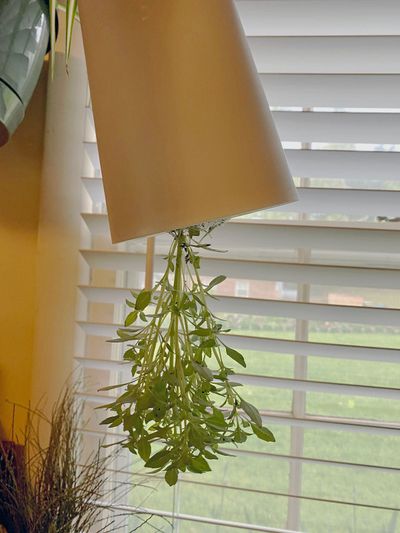Growing herbs upside down has certain benefits and a few drawbacks, but can be useful in small garden spaces. Upside down herbs are readily accessible and grow just as well as tomatoes when hung vertically. You can easily make your own hanging herb garden with just a few simple household items.
Benefits of a Hanging Herb Garden
Herbs that grow upside down are great space savers for gardeners who don’t have a convenient garden plot. The practice provides better drainage, reduces common pests, and enhances air circulation and sun access. The containers do tend to dry out more quickly than traditional pots, but it keeps the herbs at arm’s reach for maximum convenience. Plus, you don’t have to purchase an upside-down container – you can make your own in just minutes. It’s even a project your children can enjoy.
What Herbs Grow Upside Down?
Not all herbs grow upside down well. Rosemary, for instance, with its bushier growth and large size would do better in the ground. However, creeping plants like thyme, oregano, and marjoram make lovely, trailing, upside down herbs. Herbs that don’t get too large are also excellent choices. Consider lemon verbena, basil, parsley, and mint. Invasive herbs that can take over outside gardens are great choices for vertical growing, keeping them from spreading and getting too aggressive. Herbs like cilantro last longer because you can grab the planter and quickly move it indoors if a freeze threatens.
How to Make Your Own Upside-Down Planter
Whether you are growing herbs upside down indoors or out, make your own planter. All you need is a large soda bottle, scissors or a razor knife, a hole puncher, duct tape, twine, and soil. Plus, a plant. Cut the bottom off the bottle. Wrap the cut edge thickly in duct tape to provide support. Punch four evenly spaced holes around the taped portion. Gently work the plant through the small hole at the bottom of the planter. Backfill with dirt and top with mulch if you want. Pull the twine through the holes and you have just made a hanging herb garden.
